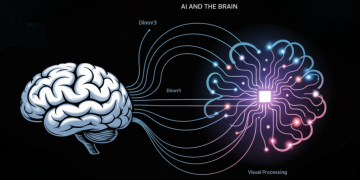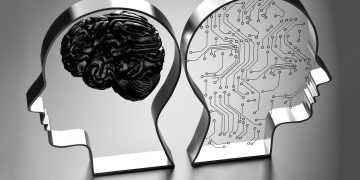Introduction: The Rise of Autonomous Vehicles
Autonomous vehicles (AVs) are no longer a distant future — they are fast becoming a part of our present. With technological advances in artificial intelligence (AI), sensors, and machine learning, the dream of self-driving cars is becoming a reality. Companies like Tesla, Waymo, and Cruise are leading the way in the development of autonomous driving technologies, promising to revolutionize the transportation industry and improve road safety.
However, alongside these advancements comes a critical question: What happens when an autonomous vehicle faces an emergency situation where difficult moral decisions must be made? Unlike human drivers, who rely on instinct, emotion, and learned moral frameworks, AI systems operate based on algorithms and data. In such life-or-death situations, how should an autonomous vehicle behave? Should it prioritize the safety of its occupants, the pedestrians, or follow some other ethical guideline?
This article explores the ethical dilemmas that arise when autonomous vehicles must make moral choices in emergency scenarios, and the complex intersection of technology, law, and ethics that we must navigate as these systems evolve.
Understanding Autonomous Vehicles and AI Decision-Making
At the core of autonomous vehicles is AI-powered decision-making. AVs use a combination of sensors, machine learning algorithms, and real-time data to navigate the world, interpret road conditions, and respond to potential hazards. These systems are designed to react quickly and accurately to unexpected situations, theoretically reducing human error, which is responsible for a large number of traffic accidents.
While AVs excel at tasks such as lane-keeping, adaptive cruise control, and obstacle avoidance, they face significant challenges when confronted with ethical dilemmas — situations where there are no easy answers, and multiple lives may be at stake. The famous example often cited is the trolley problem, a thought experiment in ethics.
The Trolley Problem and Autonomous Vehicles
The trolley problem is a moral dilemma that asks a person to decide whether to divert a runaway trolley onto a track that will kill one person in order to save five others. When applied to autonomous vehicles, the dilemma becomes: If an AV faces a situation where it must choose between harming its passengers or pedestrians, which decision should it make?
For example, imagine an autonomous vehicle driving down a road when suddenly, a group of pedestrians steps into its path. The vehicle has two choices: swerve and hit a single pedestrian or continue on its course and risk injuring or killing multiple pedestrians. How should the car’s AI decide? Should it value the lives of its passengers over those of the pedestrians? Should it minimize the number of lives lost, regardless of who is involved?
These kinds of ethical questions are at the forefront of autonomous vehicle design. Since AI lacks emotions, moral reasoning, or empathy, it must be programmed with decision-making frameworks that reflect certain ethical values, which may differ based on cultural, legal, and philosophical views.
Ethical Frameworks for Autonomous Vehicles
To address these moral dilemmas, engineers, ethicists, and lawmakers are exploring different frameworks for programming autonomous vehicles. The ethical framework chosen by a vehicle’s developers will ultimately shape its decision-making process in emergency situations.
1. Utilitarianism: The Greatest Good for the Greatest Number
One common ethical framework considered in the design of autonomous vehicles is utilitarianism, which advocates for actions that maximize overall happiness or minimize suffering. In the context of autonomous driving, a utilitarian approach would likely prioritize saving the greatest number of people, even if it comes at the expense of a single individual. For instance, an AV could be programmed to sacrifice one life (such as its passenger) to save five pedestrians.
While this approach aims to reduce the total harm in an emergency scenario, it is not without significant challenges. The core issue is determining how to quantify “harm” and whether it’s ethical to sacrifice an individual for the greater good, even if that individual had no control over the situation.
2. Deontological Ethics: Following Rules and Duties
In contrast to utilitarianism, deontological ethics emphasizes the importance of following moral rules or duties, regardless of the consequences. A deontological approach to autonomous vehicles might prioritize the idea that the vehicle should not intentionally harm any person, regardless of the situation.
For example, under a deontological framework, an autonomous vehicle might be programmed to avoid making any decision that could actively harm a person, even if it results in greater harm in the long term. The emphasis would be on adhering to ethical rules, such as “do not harm” or “protect human life,” even in the face of difficult choices.
While this approach could result in fewer deaths in certain scenarios, it may also result in situations where the AV is unable to make decisions quickly enough to avoid harm, leading to a greater number of casualties in some emergency situations.
3. Virtue Ethics: Moral Character and Intentions
A third approach to programming autonomous vehicles might be based on virtue ethics, which focuses on the character and intentions of the decision-maker. In the case of AVs, this could involve programming the AI to make decisions based on principles of compassion, empathy, and moral integrity, similar to how a human driver might behave in an emergency situation.
Under virtue ethics, the goal would be to design AVs that emulate the moral character of responsible and caring individuals. However, this presents challenges because AI, unlike humans, does not possess emotional intelligence or a moral compass. It must be trained to recognize certain ethical values, which may be difficult to standardize across different cultures and contexts.

Challenges in Programming Ethical AI for Autonomous Vehicles
While ethical frameworks like utilitarianism, deontology, and virtue ethics provide potential guidelines for programming autonomous vehicles, there are several challenges in translating these abstract principles into practical decision-making models.
1. Cultural and Societal Differences
Ethical principles can vary significantly across cultures and societies. For example, a utilitarian approach that prioritizes the greater good may be more accepted in certain cultures, while others may place a higher value on individual rights and autonomy. This diversity of ethical beliefs complicates the process of programming a one-size-fits-all solution for autonomous vehicles. Developers must decide whose moral values will influence the AI’s decisions and whether it is possible to create universally acceptable ethical guidelines.
2. Legal and Liability Concerns
In emergency situations where a moral decision is made by an AI system, questions of legal liability arise. If an autonomous vehicle is involved in an accident or makes a decision that results in harm, who is responsible for the outcome? Is it the manufacturer of the AI system, the company that developed the vehicle, or the vehicle owner?
Laws regarding liability in autonomous driving are still developing, and various countries have different approaches to assigning responsibility in the event of an accident. This legal uncertainty can complicate the adoption and deployment of autonomous vehicles, as manufacturers and consumers alike seek clarity on their potential liabilities.
3. Transparency and Trust
For autonomous vehicles to be widely accepted, it is essential that their decision-making processes are transparent and understandable. People must trust that the AI systems making life-or-death decisions are programmed with appropriate ethical considerations. However, the complexity of AI algorithms, combined with the proprietary nature of many AI models, makes it difficult for the public to understand how these decisions are made. This lack of transparency may undermine trust in autonomous vehicles and raise concerns about their safety and fairness.
Looking Forward: The Role of Regulation and Ethics in Autonomous Driving
As autonomous vehicles continue to evolve, it will be crucial for regulators, ethicists, and industry leaders to work together to create guidelines and standards for the ethical use of AI in driving. Key steps may include:
- Developing International Standards: The creation of globally accepted ethical standards for autonomous driving could help ensure consistency in the programming of these systems and promote public trust.
- Establishing Legal Frameworks: Governments must establish clear legal frameworks to determine liability in autonomous vehicle accidents and ensure that ethical guidelines are reflected in the laws that govern road safety.
- Public Involvement: Ethical decisions in AI should reflect the values of society. Public consultations and discussions on the moral principles that should guide autonomous driving could help create more inclusive and widely accepted standards.
- Continuous Monitoring and Adaptation: As AI technologies and societal attitudes evolve, it will be essential to continuously monitor and update the ethical frameworks that guide autonomous vehicles, ensuring that they remain relevant and effective in addressing new challenges.
Conclusion: The Future of Autonomous Vehicles and Ethical AI
The ethical dilemmas surrounding autonomous driving are far from simple. Deciding how AI systems should make moral choices in life-and-death situations is a profound challenge that requires collaboration across disciplines, including engineering, ethics, law, and public policy. While AI has the potential to reduce accidents caused by human error, it cannot replace the nuance and emotional intelligence of human decision-making, especially in emergency situations.
As autonomous vehicles become more widespread, it will be crucial to ensure that their decision-making processes align with societal values and legal frameworks. The development of transparent, accountable, and ethical AI systems will be key to ensuring that autonomous vehicles can enhance road safety without compromising moral principles.
Ultimately, the question remains: Can AI make the right moral choices in emergencies, and should it? The future of autonomous driving will depend on the answers we collectively provide to these ethical questions.
















































Discussion about this post